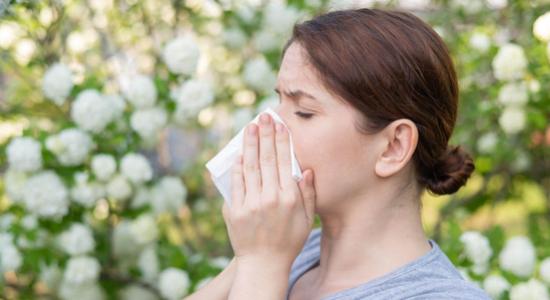See all "Mucus" Section Topics

If you feel like you have excess mucus in your throat due to Candida, this can certainly occur. If your throat or mouth have enough Candida growing in these areas, some of it can get caught in the mucus created in these areas. However, it is clear that a throat yeast infection is a somewhat unlikely occurrence if you are in good health. Conversely, if your immune system is impaired (say via cancer or having HIV) you are at much greater risk for developing this infection. Another key thing to consider, is the fact strong heartburn medication may predispose you to a throat yeast infection as well; and, you don’t have to have a compromised immune system for this to occur.
As research indicates, most of the mucus in the throat is actually produced in the mouth. So, if you have coughed up some phlegm, and you suspect Candida is in it, you could have an oral yeast infection (thrush). Mucus is created by the oral and esophageal mucus membranes to protect these areas from infection. Mucus also contains a good amount of carbohydrates in its molecular structure; which can be food for Candida cells. It may be very likely that you have oral thrush, and the yeast simply is trapped in the throat mucus and grows to some extent. As the body naturally clears away this mucus, you cough it up and see Candida in your mucus.
The yeast Candida is white in appearance, and can appear as small particles of white material. This white material may be difficult to distinguish from ordinary phlegm; however, it may not wash away easily with water and can be detected more readily after you wash coughed up phlegm with water. Either way, it may be difficult to ascertain a sample of something that could be Candida. If you can, it may be that you have other, more clear signs of a Candida problem, in your mouth (such as small white lesions).
As research will state, many throat yeast infections cause abdominal pain. Some, possibly more indicative symptoms of this infection, are difficulty swallowing foods or liquids and pain when swallowing. Excess mucus in the throat does not appear to be a hallmark symptom of Candidiasis of the esophagus. The research on esophageal Candidiasis appears not to mention this symptom at all. One symptom research does appear to describe is being more aware of the food moving down your esophagus. And, this feeling of food going down your esophagus is likely not related to elevated mucus secretion.
If you are sure you are seeing Candida in your throat phlegm, it may be that you have an oral infection; and not a much more rare throat yeast infection.
A 1/2 Day & Yeast is Gone!
Linda Allen suffered from yeast infections for years. Through researching natural medicine & Candida, she found an efficacious solution!
Linda is one expert you want on your side! Let her show you how to get rid of a superficial yeast infection in just 12 hours; AND, keep it gone!
A 60-day, 100% money back guarantee is provided.
Visit Official Site!What is Throat Mucus?

A study discussed in some detail the mucus of the esophagus; the study was published in Gastroenterology [106.4 (1994): 973-981]. The mucus membrane of the esophagus is covered by a squamous epithelium (which is a layer of flat cells; they are sometimes referred to as pavement epithelium because it resembles tiles of pavement) which has many glands. The study found that esophageal mucus is a heterogeneous mixture of proteins; with the majority of these proteins have a very low carbohydrate to protein ratio. This indicates these proteins have a non-mucin composition. Concerning the composition of all esophageal secretions, the research states they are a heterogeneous mixture of mucin, proteins, and polypeptides (strings of amino acid).
The study showed that the normal rate for mucin synthesis was approximately 0.23 milligrams per 0.1 square millimeter per minute (0.23mg * cm-2 * min-1). So the esophagus makes about 2.3 mg of mucin in every 1 square millimeter of esophageal epithelium, every minute.
Concerning the composition of mucin, the research found that the protein chain core of the mucin molecule comprised 30% of the weight of the mucin. The carbohydrate component of the mucin was typical in terms of its characteristics to gastrointestinal tract mucin. The study stated that esophageal mucin appears to be comprised of about 70% carbohydrates.
The research's conclusion finished by stating the mucin produced in the esophageal tissue significantly helps maintain the high viscosity of esophageal secretions.
The next study, published in Nature Reviews Gastroenterology & Hepatology [9.1 (2012): 55], also discussed mucin. The research states that two primary mucins exist: those that are bound to the membrane section which faces out towards the lumen (a hollow structure) of the gastrointestinal (GI) tract and those mucins that are freely secreted. The mucus barrier in the throat helps to protect the tissue from the harsh chemicals from the gastric process (acid, pepensin, and other substances). This mucus barrier is continually eroded by mechanical forces, and by the deterioration of gastric chemicals. However, it is replenished by esophageal mucus glands and by swallowed saliva.
In a healthy person, mucin is certainly present in the lumen of the esophagus, and its presence has been associated with acid and pepsin. Saliva also helps protect against acid and pepsin, and helps to protect the esophageal mucosa. Mucin is a substance considered to be one of the things in salvia which makes it able to neutralize acid in the esophagus. The esophageal mucosa is capable of making mucin; however, mucin that originates from the oral cavity is the predominant form in the esophagus.
Eliminate Bacterial Vaginosis & Vaginal Odor
Jennifer O’Brien is one prominent expert on BV that knows how to get rid of vaginal odor. BV is a common infection that you don’t have to put up with.
Jennifer will show you how to naturally eliminate vaginal odor in just 3 days.
A 60-day, 100% money back guarantee is provided.
Visit Official Site!Symptoms of Candida Throat Infections
![Pictured here is an endoscopy’s photograph of Candida esophagitis. The white lesions of Candida are evident in the photo of this individual’s throat. Image Source: Gastroenterology Research [11.3 (2018): 195].](/img/Picture-of-a-Throat-Yeast-Infection.jpg)
A study that discussed these symptoms was published in Gastroenterology [71.5 (1976): 715-719]. The study stated that Candida infection of the throat is viewed as a fairly uncommon type of infection. Those people who are considered to be at risk for developing it are those with symptomatic oral thrush or predisposing underlying health condition. The study grouped patients that had Candida esophagitis (a yeast infections of the throat) into four groups, which were delineated by symptoms, as follows:
- Grade I: Patients presented with a few raised white plaques up to 2mm in size and also had hyperemia (increased blood flow to an area of the body).
- Grade II: Patients had many raised white plaques greater than 2mm in size, had hyperemia, and also edema (unusual swelling of a body area).
- Grade III: Patients had elevated white plaques that were nodular, formed in lines—and these lines of plaques merged together to some extent. Patients also presented with hyperemia, and had very noticeable ulceration of tissue.
- Grade IV: Patients had all the symptoms of grade III along with the occasional narrowing of the esophagus and increased frailty of the mucus membranes.
In this study, 27 people were found to have white plaques, and were assigned grades based upon the aforementioned symptoms. These indicative white plaques were not present in the upper third of the esophagus in all but 2 people. Of these two people with noticeable lesions in the upper third of the esophagus, one person had oral thrush and the other had no lesions in their mouth. Subsequently, according to this study's findings, it may be impossible to diagnose a throat yeast infection by simply looking at the throat of a person with their mouth opened. You will likely need to have a doctor run a scope into the throat to reach a position the lesions are likely to be at.
Of the 27 patients with a yeast infection of the throat, 14 had other symptoms relating to their esophagus. These symptoms included difficulty swallowing foods or liquids (a problem known as dysphagia, which can range from slightly difficult to total and painful blockage of the esophagus), feeling aware of food passing down the throat, and pain behind the breastbone that radiated to the shoulder blades. Only 8 of these patients had a predisposing health situation.
Another study stated the symptoms of esophageal Candida infections. The research was published in the World Journal of Gastroenterology [9.10 (2003): 2328]. Concerning symptoms, of patients with this health malady, 39.2% had pain behind the breastbone, 25.4% had difficulty or pain when swallowing (dysphagia), and 35.2% had symptoms in the area directly above the stomach (epigastric symptoms).
The research in this study also entailed examining the esophagus of the patients. Esophageal symptoms were assigned to four grades of severity depending upon these findings: the degree plaques covered the surface of the esophagus, and if the esophagus could be opened by pressing air into the esophagus. Again, it may be difficult to see plaques on the throat without an endoscopy (inserting a probe into the throat).
Clair Goodall: Author & Nature Lover
Clair Goodall is a bee-obsessed natural medicine convert from Minnesota. She is one expert you might want to know more about!
Clair will help you protect you and your family from toxic products and chemicals and help you discover solutions from nature.
Also, Clair’s book is backed by a 60-day, 100% money back guarantee
Visit Official Site!Who is at Risk for Throat Yeast Infections?

A study, published in the European Journal of Clinical Microbiology and Infectious Diseases [19.2 (2000): 96-100], discussed the risk factors for developing a throat yeast infection. The research stated, of course at the time of its writing, that since the early 1980’s, most studies involving throat yeast infections have involved people with the human immunodeficiency virus (HIV). According to the study, some risk factors include the following:
- Having a suppressed immune system
- Having previous esophageal diseases
- Having cancer
- Taking broad-spectrum antibiotics may elevate risk
- Taking corticosteroid therapy
- Being infected with HIV
The study also found that taking strong heartburn medications, like omeprazole, may play a role in individuals developing esophageal Candidiasis. Lesser stomach acid inhibiting drugs may not sufficiently reduce gastric pH to produce such risk. One stated reason for this, made by the research, was the fact that gastric juices tend to play a role in protecting against infection. Although the exact causes of this infection was said to be unknown, the researchers postulated that an elevated pH of gastric juices may be a culprit. Candida is known not to tolerate acidic conditions well at all, and prefers an alkaline (elevated) pH to grow and thrive. When conditions in the esophagus become too alkaline, this may be a predisposing factor to this condition. The following quote, discussing this, was taken from the study:
Although the ultimate mechanism that causes esophageal candidiasis is not known, an elevated gastric pH seems to be relevant. Gastric acidity is known to be an important barrier for most microorganisms, and its inhibition can favor the development of a number of infections. Accordingly, Karmeli et al. were able to culture Candida albicans from the gastric aspirate of four of 12 patients after 1 month of treatment with omeprazole.
European Journal of Clinical Microbiology and Infectious Diseases [19.2 (2000): 96-100]
Additional research also discussed the risk factors for developing throat yeast infections. The study was published in Gastroenterology Research [11.3 (2018): 195]. According to the study, this condition usually pertains to people who have an impaired immune system. However, Candidiasis of the esophagus is the most common infection of the esophagus; and is primarily caused by Candida albicans. The yeast C. albicans lives commensally (i.e., gaining a benefit from its host while not causing harm or not benefiting the host) in the esophagus of 20% of people. Throat yeast infections are considered to be an opportunistic infection; i.e., this condition only arises when an opportunity is presented to the Candida to overgrow and cause infection.
Aside from having a compromised immune system; other risk factors, identified as possibly predisposing to this condition by this study, included: taking proton pump inhibitors (acid reflux medication), taking inhaled corticosteroids, prior reflux esophagitis, and having gastroesophageal reflux.
The study states individuals with this infection often have difficulty swallowing foods or liquids (dysphagia) or experience pain when swallowing (odynophagia). In those people with the acquired immunodeficiency syndrome (AIDS), oral thrush often occurs at the same time. In the research, the most common complaint leading to a diagnosis of throat Candidiasis was abdominal pain; this symptom was present in half of the patients. A small minority had difficulty swallowing food and liquid (11.3%) or pain during the swallowing process (6.3%).
A Natural, Safe Yeast Infection Cure

Yeast infections are a very common occurrence; although typically they do not affect the esophagus and often do not cause excess mucus—but this can occur. As you may know, many women suffer from recurrent vaginal yeast infections; however, Candida can cause more problems than just a localized infection. One woman who had her life turned upside down by Candida was Linda Allen.
Linda’s health problems began in her teen years; and would go on to last for about 12 years thereafter. Linda, at the beginning, developed a sinus infection. Later Linda, like so many other women, developed a yeast infection. Linda decided to see a medical doctor about her yeast infection and was prescribed an antifungal. The antifungal medication the doctor gave her worked excellently at first; however, as time went by, Linda developed yet another yeast infection.
Linda’s struggles with Candida became more pronounced as time went by. The doctors Linda went to prescribed her more drugs in hopes of helping her situation. Linda was put on antibiotics, and she even tried allergy medication. Nothing seemed to make her feel better, and all the while her health was degrading.
Linda suffered for some time before she decided to make an appointment with a naturopath. The naturopath did not offer her a permanent solution, however Linda did discover from the naturopath that her health problems were due to systemic Candidiasis. The yeast Candida had invaded Linda’s body and the overgrowth was the source of all her health problems. This information was life changing; Linda finally had a reason for her bad health.
Linda would go on to undertake an extensive amount of research on Candida and how it could harm a person’s health. She tried many different products and spent a great deal of time reading material on this subject. Eventually, Linda put together a prototype system for eliminating yeast infections. She would go on to spend about a year refining her system before she tried to implement it on herself.
After Linda put her new anti-Candida plan into action, she found that her yeast infections cleared up quickly. And, as time went by, Linda began to regain her lost health which Candida had ruined for over a decade! Linda showed her treatment plan to a medical doctor and the physician thought that Linda might really have a great idea on her hands. Linda then decided to share her success and treatment plan with others. Linda found that those who used her system also saw the same exceptional success and were winning their battle with Candida.
It did not take Linda long to write an entire book documenting her treatment plan so that others could also find freedom from their Candida related health problems. In her book, Linda not only outlines how to get free from systemic Candida but also provides a safe, natural way to get rid of a yeast infection in about 12 hours of time. Since Linda published her book, she has helped thousands of people around the world achieve the same freedom from Candida that she found.
Linda’s book is published by a subsidiary the U.S. based company Keynetics Incorporated. And, Linda’s publisher provides a 60 day, 100% money back guarantee on Linda’s book: Yeast Infection no More. Linda’s book is available as a digital PDF and can be read on a smartphone, other mobile device, or computer. And, again, if you want to give Linda’s book a try (and you’ve tried a lot of other remedies with no success), you can be assured that you will receive a full refund if you find within 60 days Linda’s book was not satisfactory.
For more information about Linda Allen’s book, to learn more about her personal journey towards health, or to see reviews of others who gave her book a try; you can learn more at Linda Allen’s website.
Author: Mr. Nicholas Gross

Nick Gross is a natural medicine enthusiast who has been researching and writing about natural medicine since 2008. Nick is primarily a web developer but also researches and authors written and video content about natural health. Nick has a bachelor’s degree in Management Information Systems from the University of Northern Iowa.
Disclaimer
The information on this website is not a prescription for anyone. This information is for informational or educational purposes only, and is not a substitute for professional medical advice or consultations with healthcare professionals.
Affiliate Disclosure
Some of the links provided on this website are affiliate links. When a purchase is made through these links, Candida Hub earns money from commission. This helps to keep the website up and helpful to people for free. Thank you for any support!
Stay Up to Date
If you enjoyed this article, consider following / liking our Facebook page. This page is primarily utilized to alert followers of new articles that are put on Candida Hub. Candida related news is also discussed. While you are there, you can see what has been more recently added to Candida Hub.
SOURCES:
- https://doi.org/10.1016/0016-5085(94)90756-0 — Namiot, Zbigniew, et al. "Human esophageal secretion: mucosal response to luminal acid and pepsin." Gastroenterology [106.4 (1994): 973-981]
- https://doi.org/10.1038/nrgastro.2011.211 — Niv, Yaron, and Ronnie Fass. "The role of mucin in GERD and its complications." Nature Reviews Gastroenterology & Hepatology [9.1 (2012): 55]
- https://doi.org/10.1016/S0016-5085(76)80347-2 — Kodsi, Baroukh E., et al. "Candida esophagitis: a prospective study of 27 cases." Gastroenterology [71.5 (1976): 715-719]
- https://dx.doi.org/10.3748/wjg.v9.i10.2328 — Yakoob, Javed, et al. "Candida esophagitis: risk factors in non-HIV population in Pakistan." World Journal of Gastroenterology [9.10 (2003): 2328]
- https://doi.org/10.1007/s100960050437 — Martinez, A. Chocarro, et al. "Risk factors for esophageal candidiasis." European Journal of Clinical Microbiology and Infectious Diseases [19.2 (2000): 96-100]
- https://dx.doi.org/10.14740/gr1019w — Nassar, Yousef, et al. "Possible risk factors for candida esophagitis in immunocompetent individuals." Gastroenterology Research [11.3 (2018): 195] (Image Used under Creative Commons License CC BY-NC 4.0)







